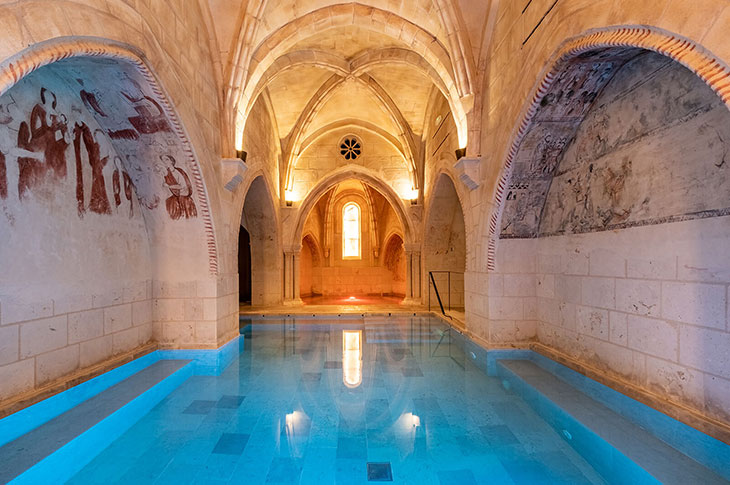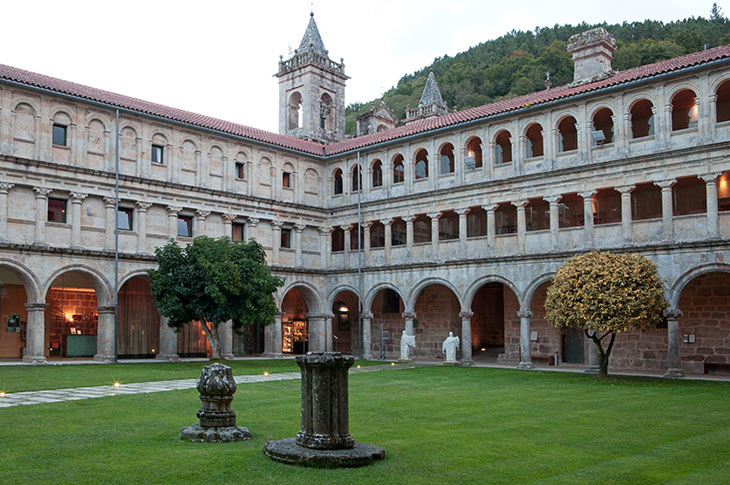Monasteries and convents now offering five-star comfort
Unique hotels that combine monastic heritage, architecture, and premium experiences
From silent convents and centuries-old monasteries to five-star hotels, Spain has masterfully repurposed part of its religious heritage by creating tourist accommodation where history, wellness, and gastronomy go hand in hand. Romanesque cloisters, Baroque churches, or former cells are transformed into spas, suites and gourmet restaurants to attract travelers in pursuit of tranquility, authenticity, and unique experiences. A trend that elevates cultural tourism to a new level of luxury. In the Aragonese Pyrenees, the Hotel & Spa Monasterio de Boltaña occupies a 17th-century Carmelite building. Having previously served as a sanatorium and youth hostel, it was reborn as a hotel in 2005, with 96 rooms and suites, alongside 54 independent villas overlooking the Ara River and the Pyrenees. The complex includes a spa spanning over 10,000 square feet, gardens, and up to 11 event spaces, with eight private lounges and a 6,500 ft² Baroque church. Further west, in the heart of Ribera del Duero, stands Castilla Termal Monasterio de Valbuena (Castile and León), a Cistercian complex founded in 1143. Today, it is a 5-star hotel with 79 rooms, thermal water spa—the chain’s hallmark—and nearly 200,000 square feet of space housing cloisters, refectories, and historic halls. The estate offers activities tied to monastic tradition, such as tending to the vegetable garden or strolling among vineyards, alongside its luxury cuisine at the Converso restaurant. Its facilities combine history, wellness, and corporate events in a unique setting.

In La Rioja, the Eurostars Los Agustinos perfectly demonstrates how buildings can reinvent themselves. Founded as a convent in 1373, it later served as a barracks, hospital, and prison before becoming a hotel in 1989. It currently offers 62 rooms, home to centuries-old walls, a central cloister covered by a glass vault, and several halls for banquets, concerts, or wine tastings. The Las Duelas restaurant completes the offering with a menu based on Riojan products, paired with wines from the D.O. Rioja. Near Salamanca, in the town of Valverdón, the Hacienda Zorita Wine Hotel & Spa occupies a Dominican convent founded in 1336, which hosted Christopher Columbus in 1487 as he sought to garner support for his expedition. Today, this hotel is made up of 40 rooms, including suites and villas with private terraces, as well as a spa and event spaces. The winery is also a key actor in local wine-tourism experiences, offering tastings of cheeses and oils from its own organic farm. This journey comes to its end in Galicia with the Parador de Santo Estevo, located within the Ribeira Sacra. Its origins date back to the 10th century, with the complex still home to three cloisters designed in the Romanesque, Gothic, and Renaissance styles. Renovated in 2004, it features 77 rooms, a spa with forest views, and the Dos Abades restaurant, housed in the former stables. Its lounges and internal gardens have made it one of the favorite destinations for weddings and events in northwest Spain.

These five examples demonstrate how the walls that once welcomed monks and pilgrims now serve as luxury refuges for travelers seeking culture, relaxation, nature, and memorable experiences. Though history still echoes through their walls, today, it is experienced with 21st-century comfort.

